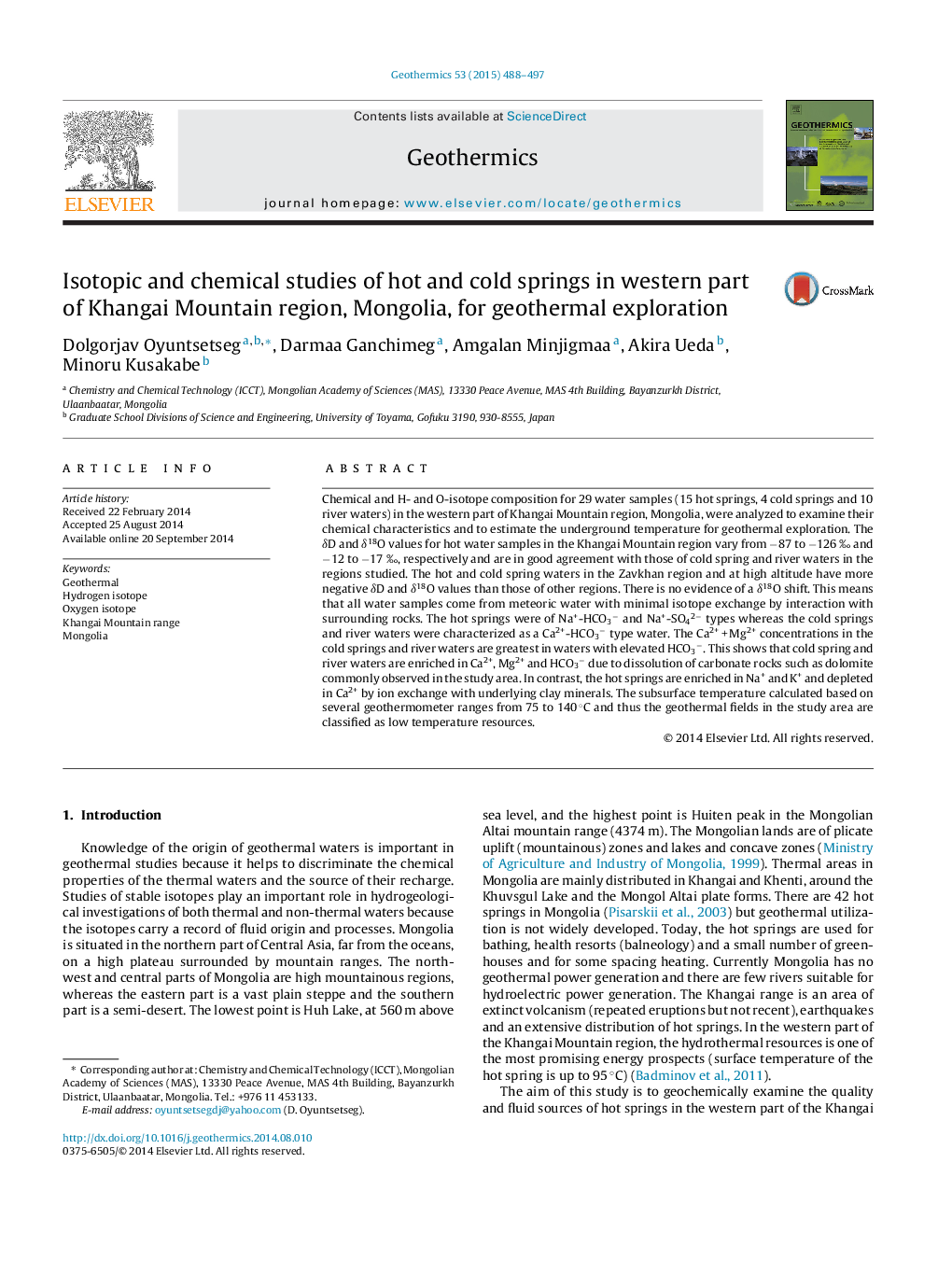| کد مقاله | کد نشریه | سال انتشار | مقاله انگلیسی | نسخه تمام متن |
|---|---|---|---|---|
| 1742285 | 1521915 | 2015 | 10 صفحه PDF | دانلود رایگان |
• Chemical and isotopic composition of hot spring waters in Khangai Mountain region, Mongolia was analyzed.
• The hot waters are of Na+-HCO3−and Na+-SO42− types whereas all river waters are Ca2+-HCO3− waters.
• All water samples are meteoric waters without isotope exchange by interaction with host rocks.
• The underground temperatures were estimated to be 75–140 °C.
• The thermal areas in the study area are classified to be low temperature resources.
Chemical and H- and O-isotope composition for 29 water samples (15 hot springs, 4 cold springs and 10 river waters) in the western part of Khangai Mountain region, Mongolia, were analyzed to examine their chemical characteristics and to estimate the underground temperature for geothermal exploration. The δD and δ18O values for hot water samples in the Khangai Mountain region vary from −87 to −126 ‰ and −12 to −17 ‰, respectively and are in good agreement with those of cold spring and river waters in the regions studied. The hot and cold spring waters in the Zavkhan region and at high altitude have more negative δD and δ18O values than those of other regions. There is no evidence of a δ18O shift. This means that all water samples come from meteoric water with minimal isotope exchange by interaction with surrounding rocks. The hot springs were of Na+-HCO3− and Na+-SO42− types whereas the cold springs and river waters were characterized as a Ca2+-HCO3− type water. The Ca2+ + Mg2+ concentrations in the cold springs and river waters are greatest in waters with elevated HCO3−. This shows that cold spring and river waters are enriched in Ca2+, Mg2+ and HCO3− due to dissolution of carbonate rocks such as dolomite commonly observed in the study area. In contrast, the hot springs are enriched in Na+ and K+ and depleted in Ca2+ by ion exchange with underlying clay minerals. The subsurface temperature calculated based on several geothermometer ranges from 75 to 140 °C and thus the geothermal fields in the study area are classified as low temperature resources.
Journal: Geothermics - Volume 53, January 2015, Pages 488–497
